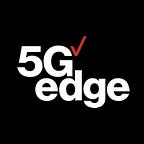DEVOPS & IoT
Testing the commercial advantages to Beame’s XR telepresence running on Verizon 5G Edge with AWS Wavelength
By Ian Nott, CTO, Aetho & Harrison Lee, CEO, Aetho
As 5G Edge, Verizon’s mobile edge computing (MEC) platform, first became a reality with AWS Wavelength, our integration-testing experts here at Beame had the opportunity to join the early beta program. This is our journey in testing Verizon 5G Edge with AWS Wavelength in combination with Beame’s extended reality (XR) platform.
An introduction to Beame
Beame is a solution that allows users to connect face to face across artificial reality (AR) and extended reality (XR) device platforms. Users can share and collaborate in a 3D space—all fueled by an enterprise-grade web application where they can upload content, integrate with outside apps, manage rooms and meetings, and use other powerful professional features.
The optimal latency and throughput needed for real-time experiences with Verizon 5G Edge
When using Beame on a mobile device in the field, users rely on mobile broadband to provide low latency and high throughput to deliver Beame’s real-time experience.
Delivering real-time co-presence in an XR space is a delicate act—one that requires a consistent level of latency and stability as assets are streamed or downloaded into the user’s space while still maintaining high-quality, low-latency positional and audio data.
Our team sought to find solutions to maintain this balancing act and ultimately follow our pursuit of the highest-quality premium enterprise XR communication and collaboration experience possible.
Precision presence to maintain quality and consistency
With Beame’s client apps, users wear a headset, such as the Magic Leap One®, or hold a mobile phone, such as the iPhone® 12 Pro. The devices use spatial tracking to understand where the user’s body is, while the app fills in the missing bits to give every individual a full human representation in the real world—delivering accessibility for everyone no matter what device they hold.
Quality and consistency of maintaining low latency in this co-presence environment is critical to preserving the social qualities that make real-life situations so rich in clarity.
Under most conditions on current systems, like the AWS parent region, 4G or 5G networks, users typically can see 100 to 300 ms round-trip time (RTT). And when data such as large 3D assets stream into the participants’ devices, that latency often jumps as the mobile networks compensate.
This can impact consistency and clarity of the co-presence experience, regardless of the external assets and data being brought into the meeting, creating hiccups or noticeable lags in the user’s voice and physical movements during these high-throughput parallel events.
Pilot testing AWS Wavelength
To facilitate our tests, we created two instances of Beame, one running on AWS parent region US West and a second running on Verizon 5G Edge with AWS Wavelength in San Francisco.
Accessing the testing infrastructure Nova in San Francisco
With travel limitations still in place, we needed a reliable method to trial the Wavelength Beame instance—on actual Verizon 5G hardware, in the geographic San Francisco Wavelength region. With help from the Verizon 5G team, we accessed Nova, a testing infrastructure for remote deployment of applications on actual phones in various areas around the country. Nova’s offering in the San Francisco region consists of Samsung Galaxy® S21 5G devices. Similarly, we used a Samsung Galaxy S21 5G in our initial side-by-side testing offsite on traditional AWS parent region infrastructure using our GUI.
Comparison tests reveal consistent speeds when connected to Verizon 5G Edge with AWS Wavelength
Precision co-presence is made up of a wide variety of attributes. One of the most critical is retaining this level of consistency. After dozens of comparison tests, we found that as long as the device is properly connected to Verizon 5G Edge with AWS Wavelength these types of speeds were consistent.
On the left, Beame’s game engine is running on the AWS parent with a 5G connection. On the right, Beame’s game engine is running on Verizon 5G Edge with AWS Wavelength. (Ping represents RTT.)
Unlocking Verizon’s 5G Edge value
XR communication’s underpinnings require fast, quality co-presence. When comparing the two systems, preliminary testing showed a two- to three-times improvement in retaining nearly instantaneous positional and audio streams in the headwinds of parallel asset downloads.
Through Verizon 5G Edge with AWS Wavelength, we’ve piloted an experience that gives our end user double or triple the level of co-presence and unlocks more consistent XR communication and collaboration.
Beame’s XR 5G MEC vision
We’re in the midst of monumental advancements—the arrival of spatial computing at the world scale, for instance, powered by next-generation localization and cloud environments and running on next-generation stylish, ubiquitous XR glasses.
And with the advent of platforms like Beame to give these bedrock technologies the glue of communication and collaboration, the increased need for multiuser world-scale experiences that require high throughput and low latency becomes clear.
Our drive to create a ubiquitous device and platform-agnostic substrate for users can be supercharged via 5G Edge. As more of these users are having their client experience in the field with an increasing number of participants and a growing scale of asset and dataset size, we are determined to grow with these needs and achieve the highest-quality professional-grade experience possible.
Via Verizon 5G Edge with AWS Wavelength we see a vision of the world that contains devices of all types, seamlessly mixing the realities of users—their presence, their surroundings, and all the content and data that makes modern businesses work.
